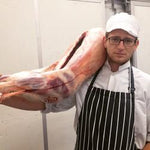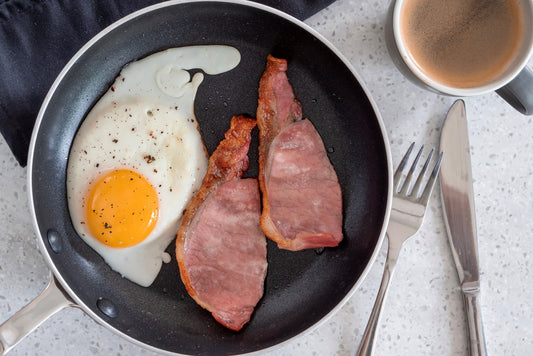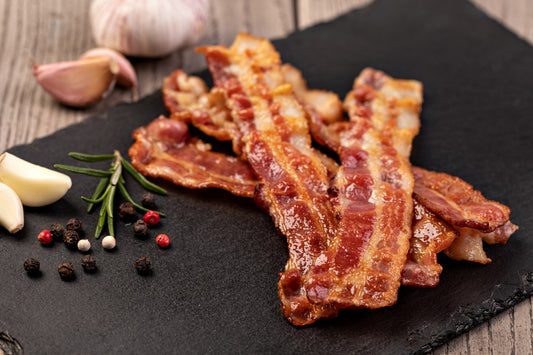What is curing?
Curing is the process of turning meat, traditionally pork, into bacon through adding salt. The whole idea was originally invented as a way to preserve the meat to keep it edible for much longer. This was obviously much more important before the arrival of ingenious inventions like electric fridges and freezer, which are so prevalent today. I mean, we've all got one, right?!
How is dry cured bacon made?
Dry-cured bacon is made by rubbing the meat with a mixture of salt, sugar, and other seasonings and then allowing it to cure for an extended period of time, typically several weeks. The curing process causes the bacon to lose moisture, resulting in a denser, more flavourful product, with no added water. Dry cured bacon will typically cook more quickly and will shrink less in the pan. Dry curing is the traditional way of creating bacon.
What is wet cured bacon?
Wet cured bacon, on the other hand, is made by either soaking the meat in a brine solution, or injecting a brine solution containing water, salt, sugar, and other flavourings directly into the meat. Most modern commercial bacon is injected as this process can be completed in a much shorter time frame, typically just a few days. Wet cured bacon will typically have a higher water content and arguably a less intense flavour. The quicker processing times will typically result in a lower cost product for consumers.
Summary
In summary, dry-cured bacon is made by curing the meat for an extended period of time, resulting in a denser, more flavourful product. Wet cured bacon is made by injecting a brine solution into the meat, resulting in a bacon with a higher water content and potentially a less intense flavour. That being said, wet cured bacon will be more budget friendly for consumers when compared to a dry cured product.








